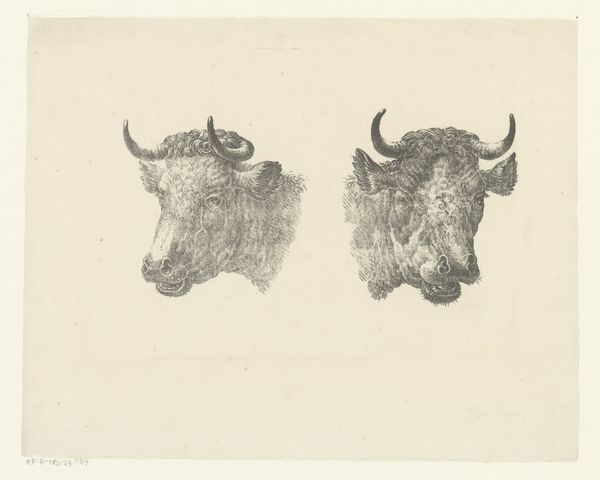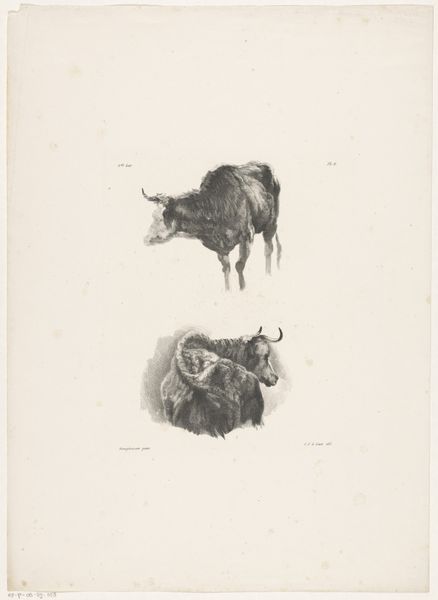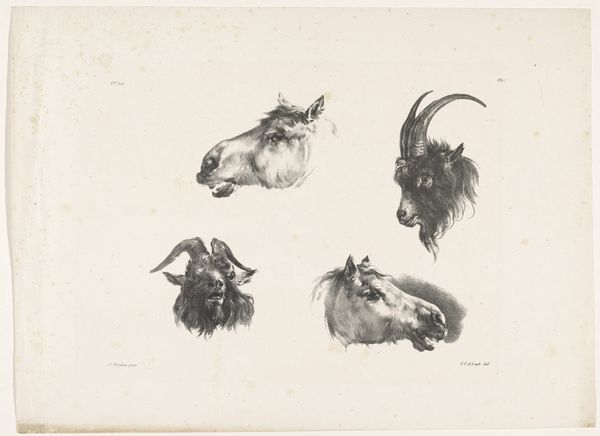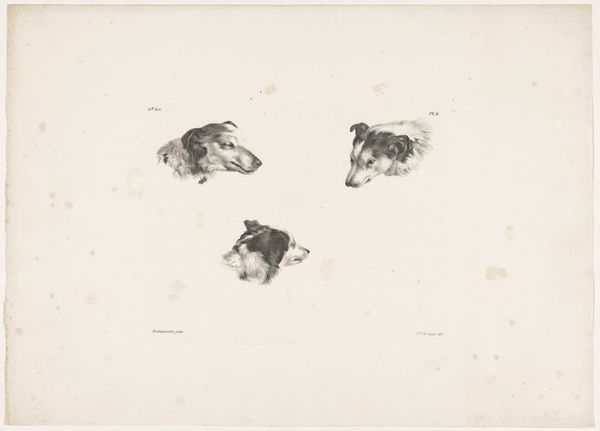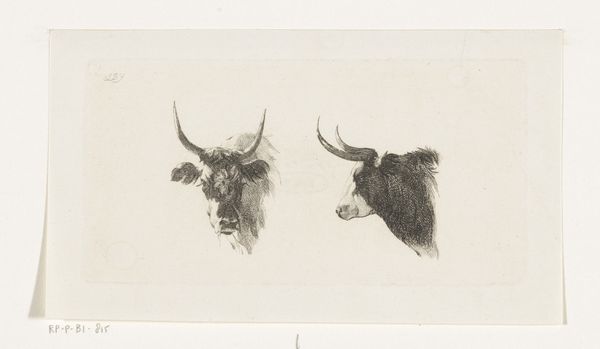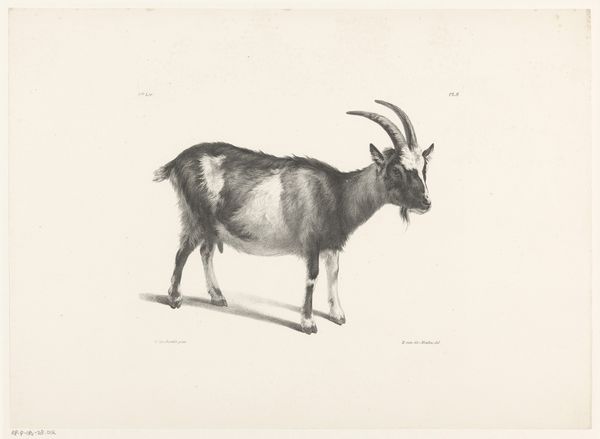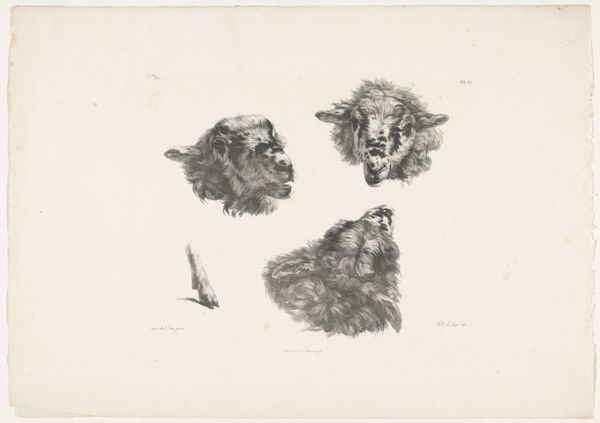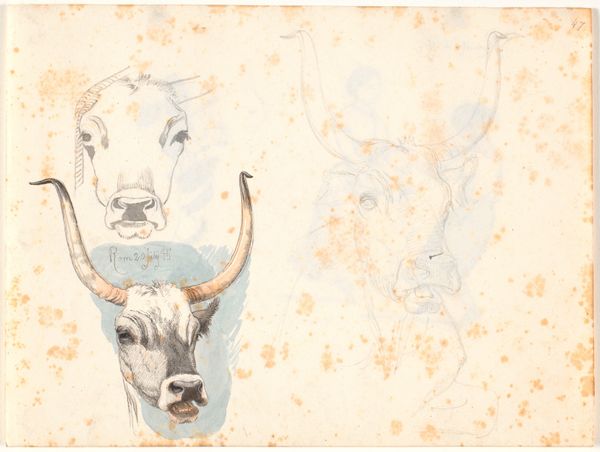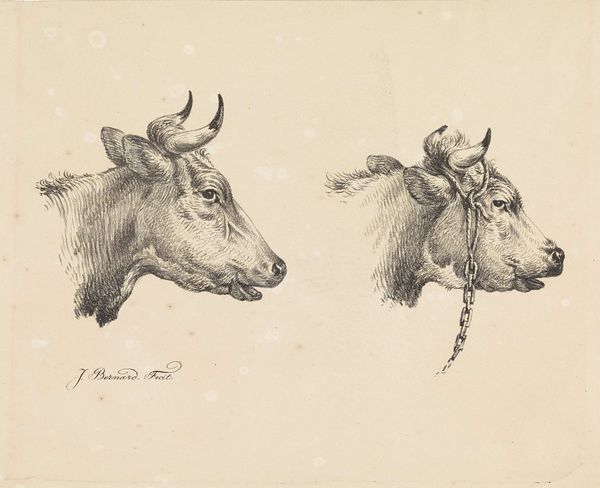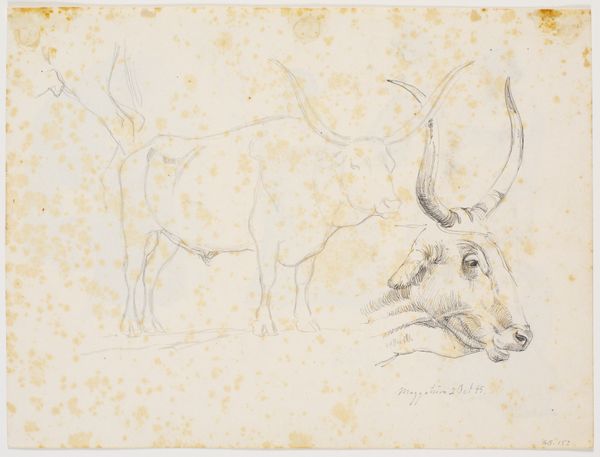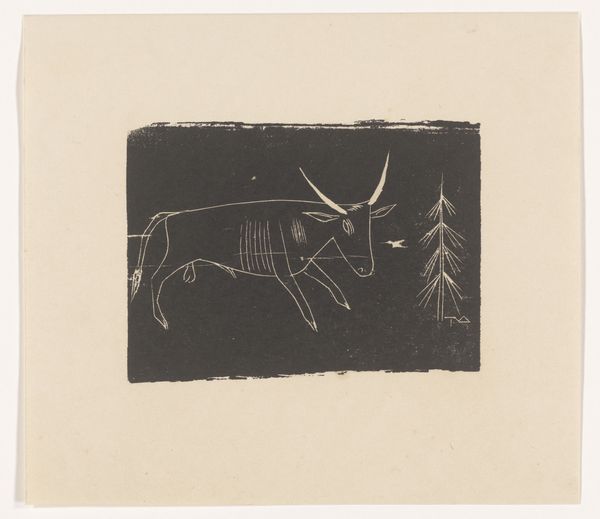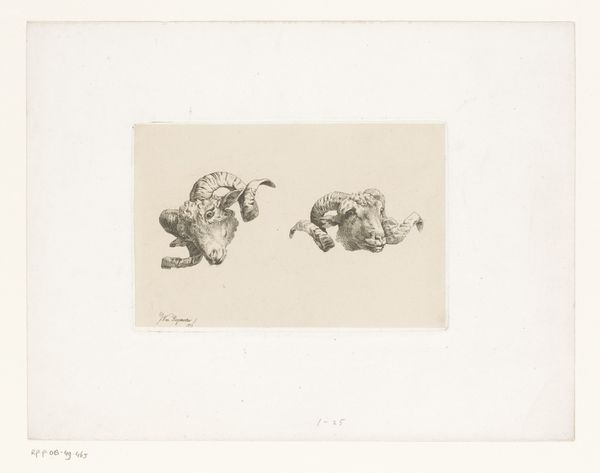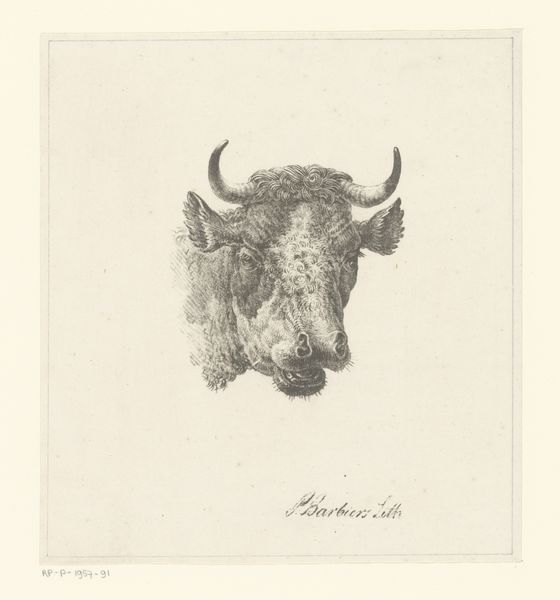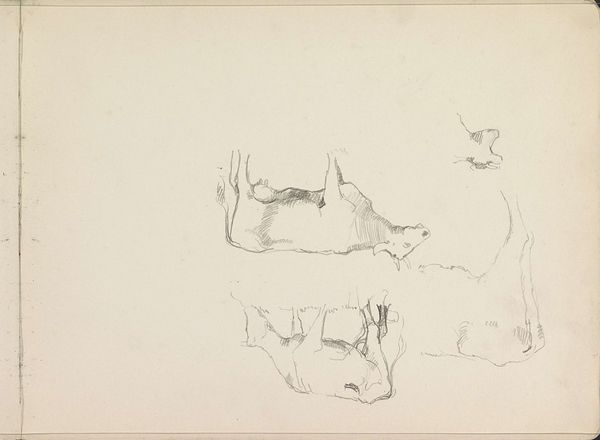
drawing, pencil
#
portrait
#
drawing
#
pencil sketch
#
romanticism
#
pencil
#
pencil work
#
watercolour illustration
#
realism
Dimensions: height 350 mm, width 485 mm
Copyright: Rijks Museum: Open Domain
Curator: Welcome. We're standing before "Drie ossekoppen," or "Three Ox Heads," a pencil drawing rendered between 1820 and 1833 by Roelof van der Meulen, currently held in the Rijksmuseum collection. Editor: My initial reaction is… stark. The off-white paper, the ghostly grey tones, and the disembodied heads give off an eerie feeling. Almost like a scientific study or a taxidermist's notes. Curator: That's a fair observation. Given the Romantic era context, one could argue it's a reflection on the natural world, perhaps even the sublime power—and mortality—of these animals, rendered in a very realist style for the period. Editor: Interesting point about the sublime. To me, oxen have long represented something fundamental about rural life – sacrifice, sustenance, even slow, steady labour. Seeing them presented like this, disarticulated, almost violates their symbolic weight. The pencil medium feels so fragile in contrast to their raw strength. Curator: Indeed, that contrast is quite telling. This work perhaps says as much about early 19th-century social shifts as it does about artistic skill. Agrarian life was central to Dutch identity, and farm animals represented the Netherlands’ economic lifeblood. Depicting only the heads maybe speaks to an emerging focus on selective breeding for livestock— a trend taking hold around this period in the Netherlands that changed lives dramatically. Editor: Absolutely, that resonates. And you see this replicated so often through historical symbolism; only the head is ever needed to represent the animal itself. To further highlight the raw essence that an animal has, which helps define and clarify that era's complex relationship with nature. It speaks, quite subtly, of dominion and stewardship. Curator: It makes one consider how our evolving perspectives shape the meaning we find in such seemingly simple portrayals. From rural reality to something…almost clinical. Editor: It also gives one an excuse to contemplate our complicated history through a very simple picture of livestock. Curator: Agreed. And therein lies the perennial magic of art: endless layers beneath an immediate impression.
Comments
No comments
Be the first to comment and join the conversation on the ultimate creative platform.
